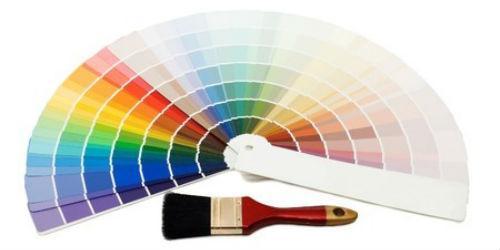This document details the components of a standardized color quality process, within research and manufacturing environments.
document details the components of a standardized color quality process, within research and manufacturing environments.
by Konica Minolta*
A color quality process helps manufacturers and suppliers meet a product's color standard more efficiently. By standardizing this process internally and throughout the supply chain, consistency and accuracy can be maintained from one batch of materials to another.
1.Color Communication Systems
Color is a matter of perception and subjective interpretation. Two people looking at the same object will give different references and express the same color in different words, which can lead to confusion and lack of internal communication across the supply chain. To avoid this, color must be expressed objectively, in numerical terms.
Color space: A color space can be described as a method of expressing the color of an object using a notation, such as numbers. Including L*a*b*, L*C*h, and XYZ, color spaces create scales for the attributes — hue, luminosity, and saturation — that make up color. This allows users to evaluate color attributes, identify inconsistencies, and express their conclusions to others in numerical terms.
Color difference formula: Color difference is defined as the numerical comparison of a sample with a standard. These formulas calculate the difference between two colors to identify inconsistencies, and should be used before a bulk production cycle to avoid color errors, reduce waste, and maintain costs.
2. Application – Methods of Specific Evaluation of Color and Appearance
The method for evaluating color and appearance is unique to each application. Standardized methods for their application should be defined to delineate the conditions of each evaluation, including viewing angles, lighting conditions, and requirements for sample preparation. This is to maintain accurate and consistent results in each assessment.
Visual assessments: Visual evaluations of a color sample should be performed within a controlled environment in a lighting booth. These assessments are conducted to identify noticeable inconsistencies between a color sample and a standard, as well as to correlate human visual perception with numerical color values. The illuminants, or lighting conditions used within the cabin should be defined, as well as the conditions for evaluation. Because the sensitivity of the human eye varies from person to person, it is recommended to organize a committee of people, either internally or by the client, to confirm these visual assessments and maintain consistency.
Instrumentation: Colorimeters and spectrophotometers are instruments used to evaluate and quantify the color and appearance of objects. These instruments are used to measure the color of a sample and identify inconsistencies using the defined color space and color difference of the formula. It is important to identify the most suitable instrument for your application by specifying which attributes are important to the appearance of your product and the specifications necessary to properly assess your requirements. If multiple instruments are required, ideally the same instrument model should be used in your company and throughout the supply chain for consistent results.
Color Analysis Software: Color analysis software is often used in conjunction with a colorimeter or spectrophotometer to provide a complete analysis of an object's color. Depending on what type of software is needed, these innovative programs are integrated into the color quality process for brand color management, color formulation and adjustment, quality control inspections, and to record color standards and objectives.
3. Defined Color Standards
Color standards specify the requirements for the final product, and must be defined internally or between the supplier and the customer. Once defined, color values must be recorded in the software to formulate and reproduce in future batches of colors or pigments.
4. Quality and Process Control Procedures
Quality control and process procedures are required to ensure that a product meets the defined color standard through an efficient process. A summary of these procedures should define how pigments or batches of color are evaluated, when and how often they should be inspected, and measures to be taken to resolve problems in color inconsistencies.
Color tolerance systems: Establishing tolerances objectively within the color quality process is an effective way to ensure consistency and accuracy throughout the supply chain and from one batch of materials to another. Color that is within the defined tolerance range is considered acceptable, while color that is outside this tolerance range will be rejected.
Using a color tolerance and instrumentation system, users can effectively evaluate pigments or colors of products against the standard and detect any deviations or inconsistencies instantly. The resulting data should be used to correct inconsistencies and refine the process for future batches of colors or pigments.
5. Documentation of Specifications and Procedures
The specifications and procedures established for the application color quality process must be documented and shared internally and with your supply chain. This ensures that all parties involved in manufacturing a product adhere to the same guidelines and specifications for color consistency, accuracy and improved efficiency.
Visual specifications: Light source, viewing angle, sample presentation conditions.
Instrumental specifications: Color space, color difference formula, color tolerance, instrument geometry, CIE observation standard, illuminants, sample presentation conditions.
6. Continuing Education and Education Continuing education and education are vital components for an effective colour quality process.
A solid understanding of color evaluation techniques and technologies for your application is necessary to effectively control the color quality of your products and continuously improve efficiency in the manufacturing process.
* For more information on the color element and practices for color measurement, please visit: http://sensing.konicaminolta.com.mx or write to: [email protected]

























Leave your comment